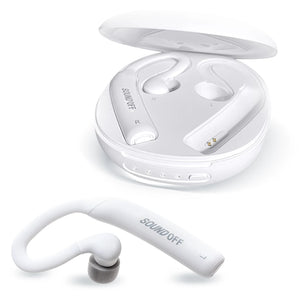Introduction
In today’s fast-paced world, maintaining focus has become a prized skill. Whether you're working from a bustling office or a home environment full of distractions, the ability to concentrate on tasks can make a significant difference in productivity. One of the most intriguing tools emerging in the fight against distraction is noise masking. Noise masking, particularly using Pink Noise, is not just a trend—it's backed by science. But how does it work, and why is it so effective? In this blog, we’ll dive deep into the neuroscience behind focus and explore how noise masking can help sharpen your mind.
Understanding Focus and Distraction

Before diving into noise masking, it's essential to understand how the brain handles focus and distraction. The brain is constantly bombarded with sensory input, from the sounds of typing on a keyboard to the hum of an air conditioner. While some of these sounds fade into the background, others can pull us away from our tasks, leading to a decrease in productivity.
The prefrontal cortex, the part of the brain responsible for decision-making, attention, and controlling impulses, plays a crucial role in maintaining focus. However, this area is also susceptible to distractions. When the brain detects a sudden noise, like a car horn or a phone ringing, it triggers an alertness response. This response is evolutionary, rooted in our need to detect potential threats. Unfortunately, in modern settings, this response can be more of a hindrance than a help.
The Science Behind Noise Masking

Noise masking works by introducing a consistent, unobtrusive sound that covers or "masks" disruptive noises. Instead of the brain being pulled in multiple directions by varying sounds, the steady noise helps create a uniform auditory environment, allowing the brain to relax and focus on the task at hand.
But why does this work? The brain is wired to detect changes in the environment, particularly auditory changes. This is why sudden noises are so distracting—they represent a change that could signal something important. Noise masking works by reducing the perceived contrast between background noise and sudden, disruptive sounds. When there is a consistent auditory backdrop, the brain is less likely to be startled by a new noise because the change is less noticeable.
The Role of Pink Noise in Noise Masking

There are different types of noise used in noise masking, including White Noise, Brown Noise, and Pink Noise. Pink Noise stands out as particularly effective for several reasons.
Unlike White Noise, which includes all audible frequencies at equal intensity, Pink Noise has more power in the lower frequencies. This makes it more soothing and less harsh on the ears. Pink Noise resembles the natural sounds we encounter in our environment, like rustling leaves or gentle rain, making it easier for the brain to accept and even enjoy.
Research has shown that Pink Noise can improve sleep quality, enhance memory, and increase focus. The gentle, balanced nature of Pink Noise allows it to mask disruptive sounds effectively without becoming a distraction itself. This is crucial for maintaining a state of deep focus, where the brain can work on tasks without the constant interruption of external stimuli.
Real-World Applications of Noise Masking
The benefits of noise masking are being recognized across various fields. In open-plan offices, noise masking systems using Pink Noise are being installed to reduce the impact of conversations and other distractions. These systems help create a more consistent auditory environment, allowing employees to focus better and be more productive.
Students are also benefiting from noise masking. Study environments can be full of distractions, but with the use of Pink Noise, students can create a sound environment conducive to deep focus. This not only helps with concentration but can also improve memory retention, making study sessions more effective.
Even in healthcare, noise masking is being used to improve patient outcomes. Hospitals are notoriously noisy environments, and this can negatively impact patient recovery. By introducing Pink Noise, hospitals can create a calmer, more restful environment, leading to better sleep and faster healing.
Conclusion
The science behind noise masking, particularly with Pink Noise, is clear. By creating a consistent auditory environment, noise masking helps the brain maintain focus, reduce distractions, and boost productivity. Whether you're working in a busy office, studying for an important exam, or simply trying to concentrate on a task, noise masking can be a powerful tool to help you achieve your goals.
As we continue to explore the potential of noise masking, it’s clear that this is more than just a passing trend. With the backing of neuroscience and real-world applications, noise masking with Pink Noise is set to become an essential part of our daily lives, helping us navigate an increasingly noisy world with focus and clarity.
References
- Hoang, A. D., & Nishida, Y. (2017). Neural correlates of the subjective experience of memory during sleep: A simultaneous fMRI and polysomnography study.Neuroimage, 162, 109-118.
- Cai, D., & Balaban, E. (2016). The science of Pink Noise.Journal of the Acoustical Society of America, 139(5), 2311-2319.
- Sound Masking in the Workplace. (2020).Office Sound Masking Solutions.



































